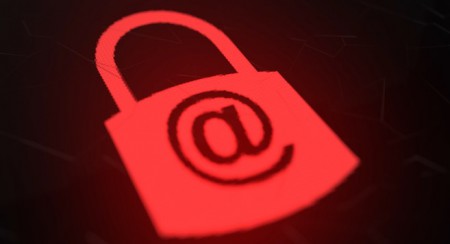Email Safety...

The following are some things to keep an eye out for:
From whom the email was sent - SPAMmers may simply disguise their email address using the display name of someone in your contacts or someone who works for your firm (In many cases, the CEO or someone in a high-ranking position in your organization)
Did you anticipate getting an email from this sender, or do you know who they are, and can you trust them?
Viruses and malware are easily spread by opening infected files, which are typically sent as email attachments. Never open email attachments unless you are absolutely certain they are legitimate. Questions to ponder:
- Do you recognize the sender?
- Do you believe the sender?
- Were you expecting this email?
Examples of SPAM:
In the email below the Display Name is "tomrowe.com VM Support Center” but the email address it was sent from was “ [email protected]”.
This is a type of SPAM e-mail that inserted the domain name from the intended recipient's e-mail as a part of the Display Name in hopes of tricking a person who's in a rush while checking emails into opening the attachment, which isn't even a voicemail. rather, an HTM hyperlink to take the unsuspecting user to a malicious internet site to steal confidential or personal information.
Remember to be cautious while checking your emails and use discretion while opening attachments or clicking on hyperlinks they contain.
Spear Phishing/Whaling
In this type of phishing, key IT/networking personnel or corporate executives are targeted using malware-laced emails that look like they come from a trustworthy source in an attempt to obtain access to internal systems and data. More than 90% of cyber-attacks begin with a successful phishing effort.
Malware
Email is one of the most common ways for known and unknown malware to be distributed. Malware is typically embedded in email attachments in the hopes that the attachment will be opened or downloaded onto a computer or network, allowing hackers to gain access to resources, steal data, or crash systems.
Phishing
Emails with embedded links to hacker sites are a popular hacker strategy. When unsuspecting visitors visit these websites, they are requested to provide PII (Personally Identifiable Information), which is then utilized to steal identities, compromise business data, or gain access to other key systems.
Ransomware
Ransomware is a malicious type of software. The code embeds itself on a network after the email attachment is launched, and ransomware generally encrypts or locks data and systems that are important to the business. The hackers then demand extortion money in order to decrypt or unlock the files or systems.
Outbound Email Hacking
Corporations are also bound by company rules and government legislation, which make them accountable for their outgoing emails and ensure that their customers' personal information is protected.
Customer PII can be disseminated through zombie attacks and IP hijacking, resulting in a company's reputation being ruined.
BEC/CEO FRAUD Imposter Email
According to the FBI's newest estimates, Business Email Compromise (BEC) scams have cost at least $5.3 billion in total damages to about 22,000 businesses around the world in the last few years.
Business Email Compromise, according to the FBI, is a sophisticated email fraud that targets firms that interact with overseas partners on a regular basis and make wire transfer payments.
